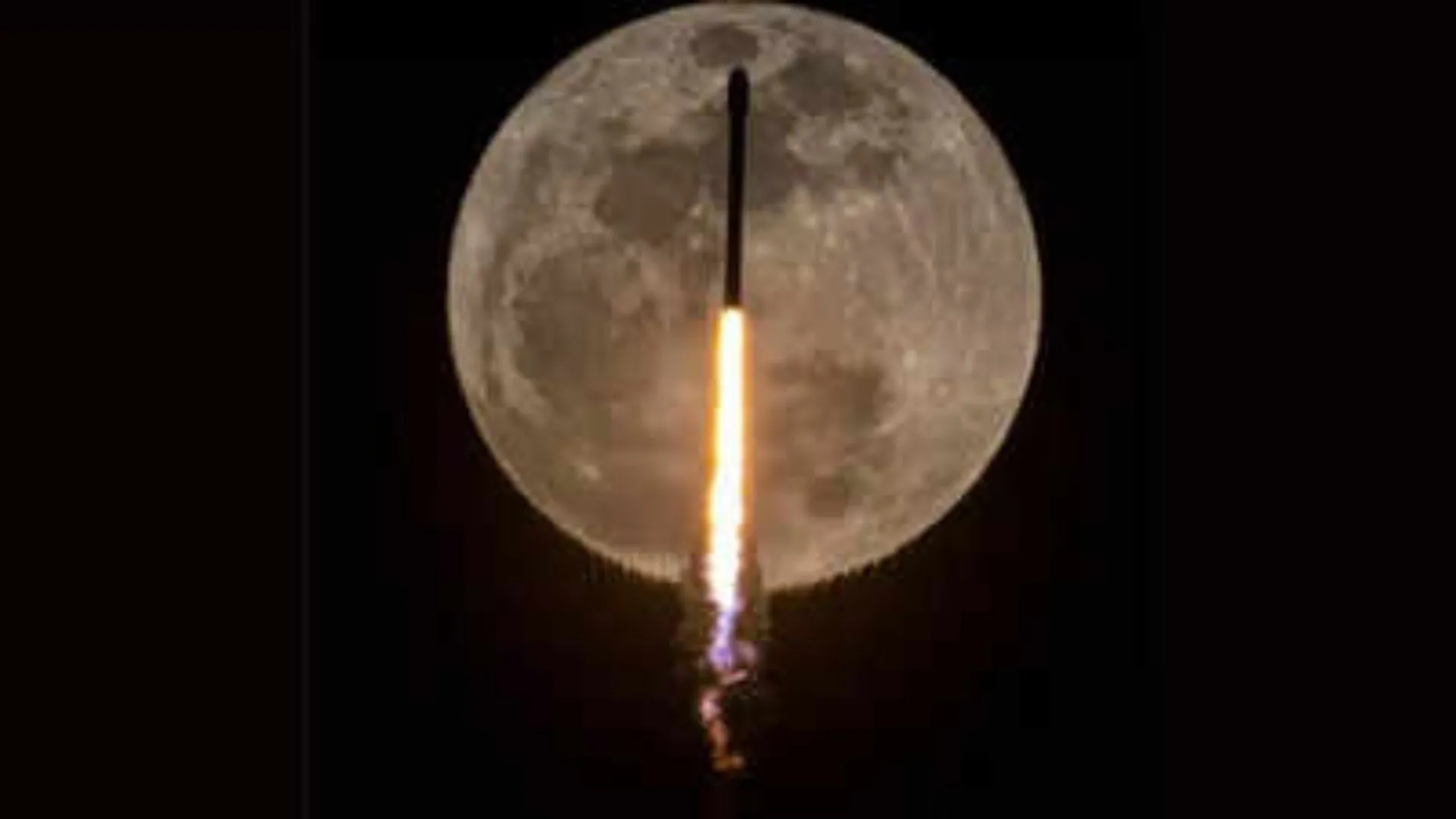Elon Musk’s SpaceX put on a dazzling show Saturday as its Falcon 9 rocket blazed through the sky, passing close to a bright full moon on its ascent from NASA’s Kennedy Space Center in Florida.
The display captivated onlookers across Florida, many of whom braved the outdoors to watch the rocket blast off and captured the breathtaking photos. Social media websites immediately filled with images and video footage of the launch, which placed 21 Starlink satellites into orbit.
A viral video showed the rocket streaking across the night sky with a trail of smoke behind it, crossing directly in front of the moon.
Take a look:
Falcon 9 launch 21 Saturday, April 12, 2025 viewed from Sanford, Florida pic.twitter.com/DvTiRIiEno
— Keriann Esley (@EsleyKeriann) April 13, 2025
A striking image, snapped by photographer John Krauss, caught the Falcon 9 against the full moon. Krauss wrote across the photo, “Falcon 9 transits the 100% full Moon during tonight’s 8:53:30pm ET launch of 21 Starlink satellites from Florida.”
Take a look:
Falcon 9 transits the 100% full Moon during tonight’s 8:53:30pm ET launch of 21 Starlink satellites from Florida 🚀🌕 pic.twitter.com/n61bQQtRLF
— John Kraus (@johnkrausphotos) April 13, 2025
Falcon 9 Deploys 21 Satellites
The rocket launched at 8:53 pm ET from Launch Complex 39A (LC-39A) and deployed 21 satellites into low-Earth orbit. Of the 21 satellites, 13 of them are outfitted with Direct to Cell technology.
Watch:
Watch Falcon 9 launch 21 @Starlink satellites to orbit from Florida, including 13 with Direct to Cell capabilities https://t.co/bh9lRReDfL
— SpaceX (@SpaceX) April 13, 2025
The technology, according to Starlink, consists of an advanced eNodeB modem onboard every satellite that provides connectivity in remote locations. The modems act as cell towers in space and are compatible with current mobile networks, much like standard roaming partners.
This mission was a significant milestone for SpaceX, as it was the company’s 400th total flight. The first-stage rocket used in this launch was on its 10th trip to space, having previously powered missions like Crew-8, Polaris Dawn, CRS-31, Astranis: From One to Many, IM-2, and five Starlink missions.
Even though the mission had suffered a number of delays, there was no stated reason why the delays had happened. Nevertheless, the final launch was worth it for those who were lucky enough to witness the rocket’s dance in space with the moon.























